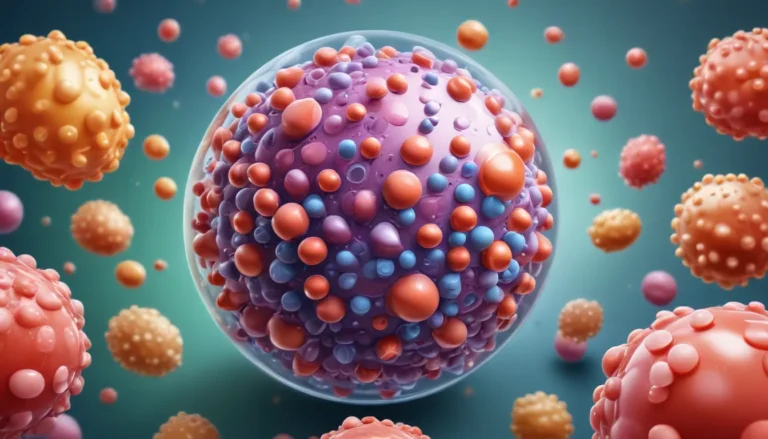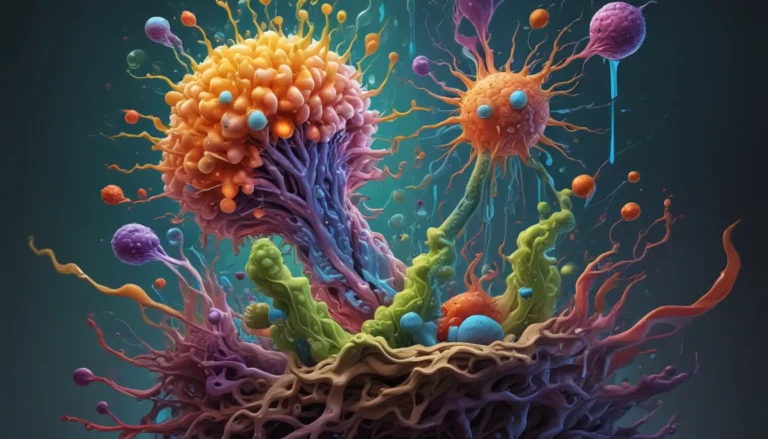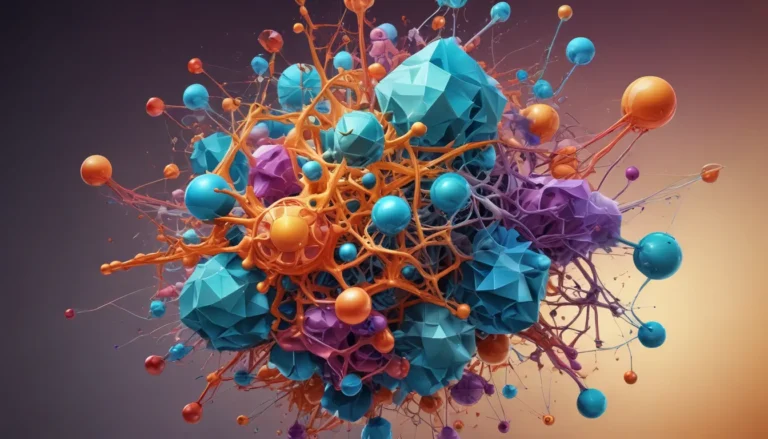A Note About Images: The images used in our articles are for illustration purposes only and may not exactly match the content. They are meant to engage readers, but the text should be relied upon for accurate information.
Welcome to the captivating world of ionization, where atoms and molecules undergo fascinating transformations to create charged ions with unique properties. From the depths of chemistry to the dynamics of our atmosphere, ionization plays a crucial role in shaping our understanding of the world around us. In this article, we will delve into nine extraordinary facts about ionization that will enrich your knowledge and spark your curiosity. Join us on this enlightening journey as we explore the key insights and applications of this fundamental process.
Unlocking the Mysteries of Ionization
Ionization is the process by which atoms or molecules gain or lose electrons, leading to the formation of ions. This essential phenomenon occurs when energy sources such as heat, light, or electricity interact with matter, unleashing a cascade of electrifying transformations. Imagine atoms engaging in a game of “electronic hot potato,” exchanging electrons to create charged particles with distinct behaviors and properties.
The Crucial Role of Ionization in Chemistry
In the realm of chemistry, ionization is a fundamental player in various chemical reactions and processes. It enables the formation of new compounds and facilitates electron transfer between atoms, ultimately resulting in the creation of stable molecules. Without ionization, the intricate dance of atoms and molecules would lack the essential ingredient needed for chemical transformations to take place.
Diving into Common Forms of Ionization
There are several common forms of ionization that manifest in different ways. Photoionization occurs when atoms or molecules absorb photons, triggering electron transitions. Collisional ionization involves energetic collisions with other particles, while electron impact ionization arises from interactions with high-energy electrons. These distinctive pathways highlight the diverse ways in which ionization shapes the behavior of matter.
Applications of Ionization in Technology
The impact of ionization extends far beyond the realm of chemistry, finding critical applications in various technologies. Mass spectrometry, a powerful analytical technique, relies on ionization to identify and analyze chemical compounds with precision. Additionally, plasma technology harnesses ionization for material processing, surface modification, and energy production, showcasing the versatility of this phenomenon in driving technological advancements.
Unveiling Atmospheric Ionization
In the vast expanse of our Earth’s atmosphere, natural processes such as cosmic rays, solar radiation, and lightning give rise to atmospheric ionization. These phenomena lead to the formation of ions that play a crucial role in atmospheric chemistry and dynamics, shaping weather patterns and atmospheric interactions. The dance of ions in the sky mirrors the intricate interplay of forces that govern our planet’s atmosphere.
Exploring the Biological Effects of Ionization
While ionizing radiation such as X-rays and gamma rays can have harmful effects on living organisms by causing DNA damage and increasing cancer risks, it also finds valuable applications in medical imaging and radiation therapy. The dual nature of ionizing radiation highlights the delicate balance between its potential risks and benefits in the realm of healthcare and scientific research.
Navigating Ionization Energy and Flame Colors
Ionization energy, the energy required to remove an electron from an atom or molecule, varies across different elements and electron configurations. This energy plays a crucial role in determining the behavior of ions and their interactions with other particles. When atoms are heated in a flame, ionization processes give rise to distinct colors as electrons transition between energy levels, painting vibrant hues across the fiery landscape.
Illuminating Ionization and Electric Current
Ionization serves as a gateway for the conduction of electric current in various materials, enabling the flow of charged particles and facilitating the transmission of electricity through conductors. The role of ionization in electrical conductivity highlights its essential contribution to powering our devices, lighting our homes, and driving technological innovations.
Embracing the Intriguing World of Ionization
Ionization transcends mere chemical reactions, influencing the colors of flames, the conduction of electricity, and even the dynamics of our atmosphere. By unraveling the extraordinary facts about ionization, we gain profound insights into the behavior of matter at the atomic and molecular levels, uncovering the intricate mechanisms that govern our world. From batteries to fuel cells, medical treatments, and beyond, the applications of ionization are as diverse as they are impactful, shaping the course of technology and scientific exploration.
Embracing New Possibilities Through Ionization
As we continue to delve into the complexities of ionization, we unlock new realms of possibility and innovation, paving the way for groundbreaking discoveries and technological advancements. The study of ionization fuels our quest for understanding the mysteries of chemistry and propels us towards a future where scientific knowledge intertwines with real-world applications. Join us as we journey through the captivating realm of ionization, where electrifying transformations and boundless potential await those who seek to explore the wonders of this fundamental process.
FAQs
- What is ionization?
-
Ionization is the process by which atoms or molecules gain or lose electrons, resulting in the formation of ions.
-
What causes ionization?
-
Ionization can be triggered by factors such as exposure to high-energy radiation, collisions with other particles, or the application of an electric field.
-
Why is ionization important?
-
Ionization plays a vital role in creating charged particles that drive chemical reactions, electricity conduction, and atmospheric processes.
-
How is ionization used in everyday life?
-
Ionization finds practical applications in operating batteries, producing electricity in fuel cells, and sterilizing air and water in medical and industrial settings.
-
Can ionization be harmful?
-
Yes, ionizing radiation like X-rays or radioactive materials can pose risks to living organisms and should be handled with care.
-
How does ionization affect the Earth’s atmosphere?
-
Ionization contributes to the formation of the ionosphere, a key region in the Earth’s upper atmosphere that influences radio wave propagation and climate dynamics.
-
Can ionization be reversed?
-
Yes, ionization can be reversed through processes like recombination, where ions combine with free electrons to form neutral atoms or molecules.
-
Are ions only found in gases?
-
No, ions can exist in various states of matter, including gases, liquids, and solids, with higher mobility typically observed in gases and liquids.
-
How is ionization studied?
- Ionization is studied through experimental techniques like mass spectrometry, ion chromatography, and spectroscopy, along with theoretical models and simulations that illuminate its intricate mechanisms.
As we continue to unravel the mysteries of ionization, let us embark on a journey of discovery and understanding, embracing the captivating interplay of science and real-world applications. The world of ionization awaits, ready to usher us into a realm of electrifying transformations, boundless potential, and awe-inspiring insights that illuminate the complex tapestry of our universe. Join us in the exploration of ionization, where every charged particle holds a story waiting to be told and every electron transition unveils a new chapter in the captivating saga of chemistry and beyond.






